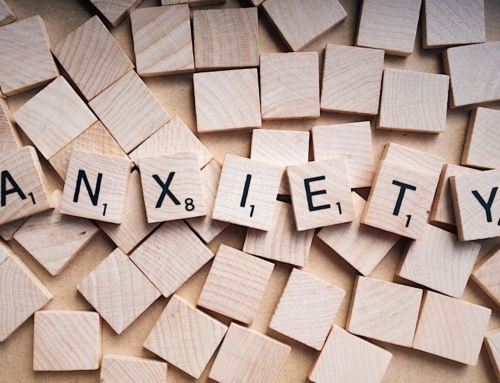Abandonment can cause significant issues for adults, even decades after being abandoned by parents or loved ones. When people are traumatized as children, they have emotional wounds left open. Sometimes those emotional wounds are light scratches, while others are gaping open and deeply painful.
 Examples of abandonment.
Examples of abandonment.
These wounds are long-lasting and show up in different ways, as in these examples:
Samantha
Samantha is a thirty-four-year-old who has had a difficult time trusting people. She constantly blames herself for the problems of those around her and that self-inflicted guilt is a lot of weight to carry. She grew up in a home where she was constantly blamed for everything. If her parents did not have enough money to pay the bills, they blamed her. If they did not have the money for gas, vacations, or going out to eat, they blamed her.
Eventually, Samantha began doing everything she could to please her parents – cleaning, cooking, and working to earn money the second she was old enough. This intense and emotionally and physically draining cycle was still never “enough” for her parents. They never supported and encouraged her through any of her endeavors, education, and strides toward building a better life.
Tim
Tim is a twenty-year-old whose parents were in and out of his life while he was raised by a grandparent. His parents were addicts who struggled with admitting they had a problem while their world was constantly in shambles. He prayed every night that his parents would find the strength to heal.
He begged them to attend his basketball games and show up to get a picture before he went to his senior prom, but they never showed. Tim still has hopes that if he works hard enough and makes a name for himself, they will eventually come around and want to seek help for their addiction.
Nancy
Nancy is a seventeen-year-old who is trying to decide what life is going to look like after high school. Her parents tell her daily that she is on her own and they will not be able to financially support her in any way. She has also heard her entire life that she is not pretty enough or smart enough.
 Hearing these words and constant criticism from her parents has left her at an emotional crossroads. Does she believe them, or is she going to prove them wrong? This constant criticism gets in her head and makes her feel like nobody will ever love her the way she wants to be loved.
Hearing these words and constant criticism from her parents has left her at an emotional crossroads. Does she believe them, or is she going to prove them wrong? This constant criticism gets in her head and makes her feel like nobody will ever love her the way she wants to be loved.
There are deep voids related to abandonment. A person who has been abandoned has scars on his or her heart that leave him or her feeling like he or she is not enough. Too often, victims of abandonment try to build barriers but feel a void when it comes to relational fulfillment. Internal trauma begins to affect relationships, choices, and future decisions.
Red flags of abandonment trauma.
People who are internally traumatized by abandonment might deal with the following:
- Shame or constant criticism
- Blame or constant guilt
- Extreme sensitivity to teasing and bullying
- Willingness to invalidate emotions
- Susceptibility to manipulation
Here are a few more things to consider about trauma related to childhood abandonment.
Mental issues and addiction.
Mental health issues or addictions can cause parents to be physically and emotionally absent. This can result in a child feeling abandoned by his or her parent and force him or her to grow up too soon. That can mean ensuring that the parent is fed and taken care of when they are hungover or taking care of siblings due to an indisposed parent. This is a lot of weight and responsibility for a child to carry, and this pain can carry over into adulthood.
Attachment problems.
An anxious attachment style can cause children (and eventually adults) to struggle with jealousy, constantly needing reassurance, worrying of rejection or infidelity, and having a people-pleasing personality. This can result in a plethora of negative behaviors and voids as an adult.
Loss of childhood.
 Children need to be children. When someone’s childhood is taken away, it can lead to them seeking fulfillment in worldly wealth and accolades, looking for a “perfect” relationship, or resorting back to the behaviors he or she missed out on as a child.
Children need to be children. When someone’s childhood is taken away, it can lead to them seeking fulfillment in worldly wealth and accolades, looking for a “perfect” relationship, or resorting back to the behaviors he or she missed out on as a child.
Children need to process their feelings. When a child is constantly made fun of or told not to express their feelings, this can result in emotional bondage. The child may feel like his or her emotions do not matter. This can cause depression, withdrawal, and social anxiety.
Regardless of their upbringing, children need to be given permission to cry, get angry, be sad, and express their joy and happiness. Emotions need to be felt, guided, and cared about for the inner child to heal.
When children constantly feel like they cannot do anything right, they might begin to fear rejection and abandonment. They might try to emotionally detach themselves from the people around them, especially those they love.
People pleasing.
A person who fears abandonment might also go to the extreme of constantly needing reassurance and fulfillment from relationships. He or she might become consumed with trying to ensure that the people around him or her will not leave. He or she might become overwhelmed when a text message or phone call is not responded to within a certain time frame.
Otherwise, he or she may think someone is angry and will not talk after the smallest disagreement. This kind of behavior can result in the victim working nonstop to please people and eventually losing a personal identity because he or she always bends for others.
Inappropriate blame.
Parents who blame children for things that go wrong can result in long-term effects and feelings of being inadequate. The child may have heard the parent make statements like these:
 “It is your fault that your dad and I broke up.”
“It is your fault that your dad and I broke up.”
“It is your fault that I did not wake up in time for work and got fired.”
“It is your fault that we do not have any money.”
“If you were not so bad, people would like to be around you and your parents would not have left.”
It is important that parents, caregivers, and any adult not resort to blaming children when things go awry. These statements stick close to a child’s heart and often replay in their mind over and over through adulthood, causing them to feel inadequate and like they ruin everything. This can increase the risk of negative behavior because they feel like it is who they are and what they are expected to be.
Healing the inner child.
Gary Currie said, “Being abandoned or given up on is the most devastating emotion we can cause in another human being.” No matter how resilient they may seem, children and adults want to connect, feel important, and feel seen. Children need to be kissed, hugged, and told “I love you.” Children need to be told that you like being around them. Children need to be given permission to play, laugh, be silly, squeal, and enjoy their littleness.
If you know a child or anyone dealing with abandonment issues, be a safe place for them. Be a constant. Be an encourager. Be the person who cheers for them at games that their parents refuse to attend. Try to make people at the office smile. Be the person who sits next to someone at lunch which often pulls to themselves.
No matter where you have been or what journey you have walked, know that Jesus has never abandoned you and will never abandon you. His love and support are constant. He is always cheering you on. Jesus is ready to wipe your tears when life feels defeating. He is ready to hold your hand through the difficult seasons of life. He is celebrating with you through the wins and carrying you through the losses.
It is not too late to address childhood trauma and abandonment issues. If there is a child in your family who is struggling, help them now. If you struggled with abandonment or trauma as a child, it is not too late to address whatever you faced.
If you were made fun of, belittled, or abandoned by the people you trusted most – hope and healing are right around the corner if you choose to take the next step today. A counselor at our office is ready to walk this journey with you and ensure that you know how valuable and beautiful your life is.
“Family on the Beach”, Courtesy of Kevin Delvecchio, Unsplash.com, CC0 License; “Forest Path”, Courtesy of Lukasz Szmigiel, Unsplash.com, CC0 License; “Wave”, Courtesy of Silas Baisch, Unsplash.com, CC0 License; “Green Leaves”, Courtesy of Goutham Krishna, Unsplash.com, CC0 License










